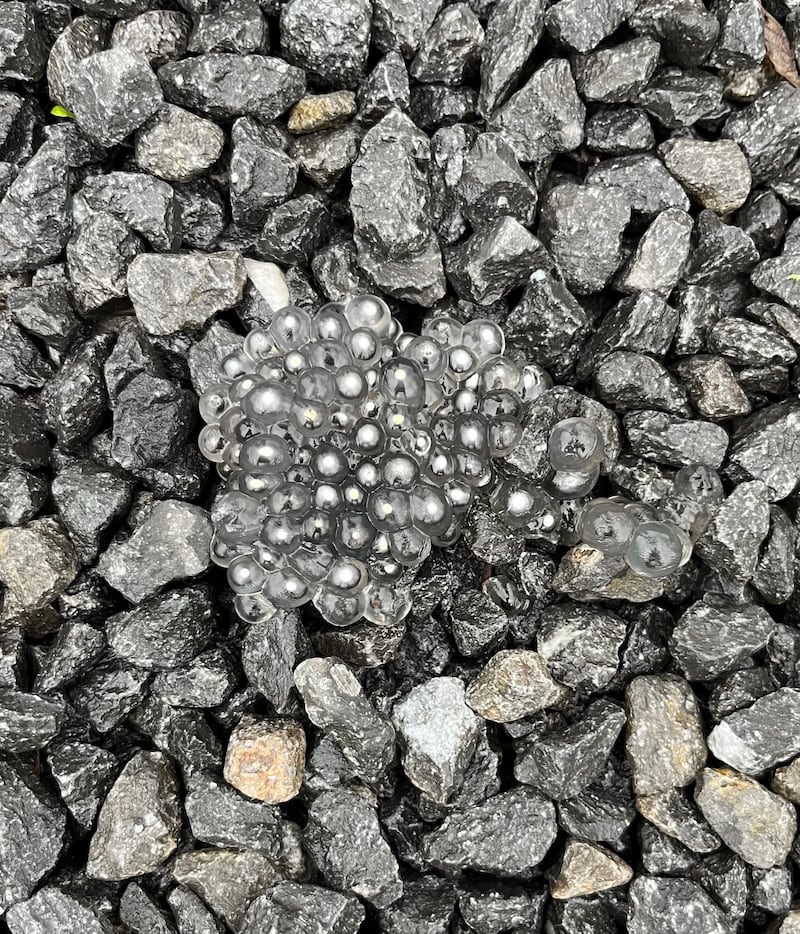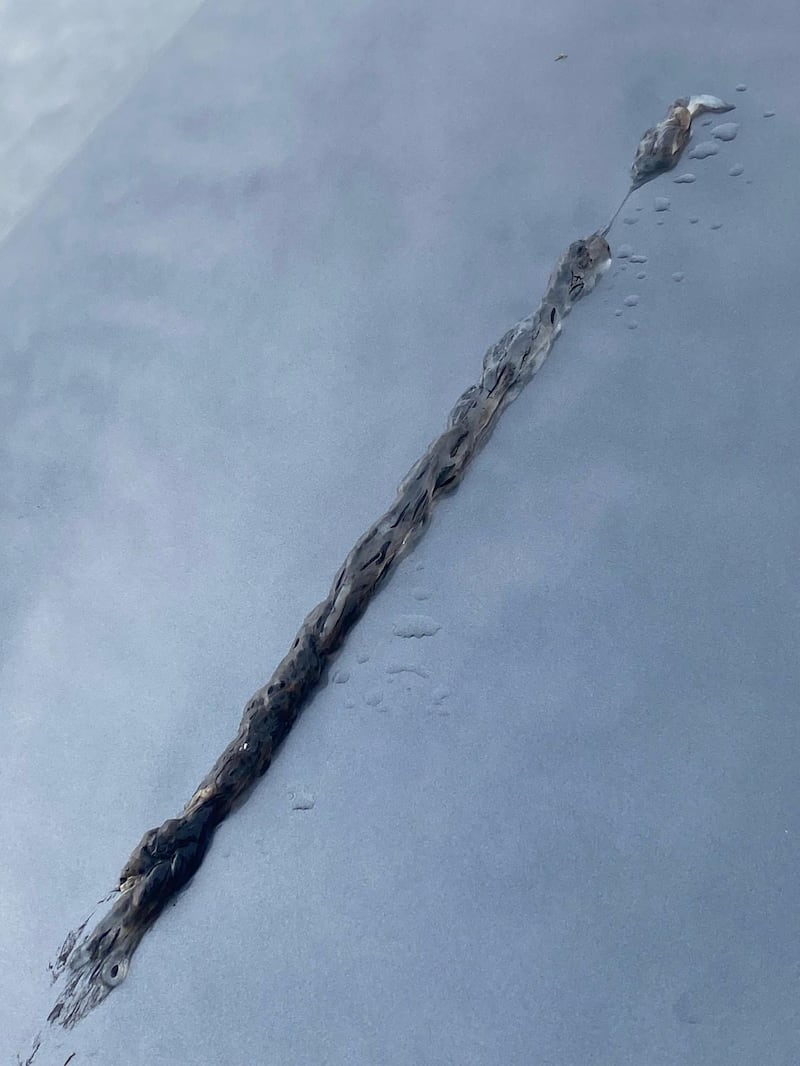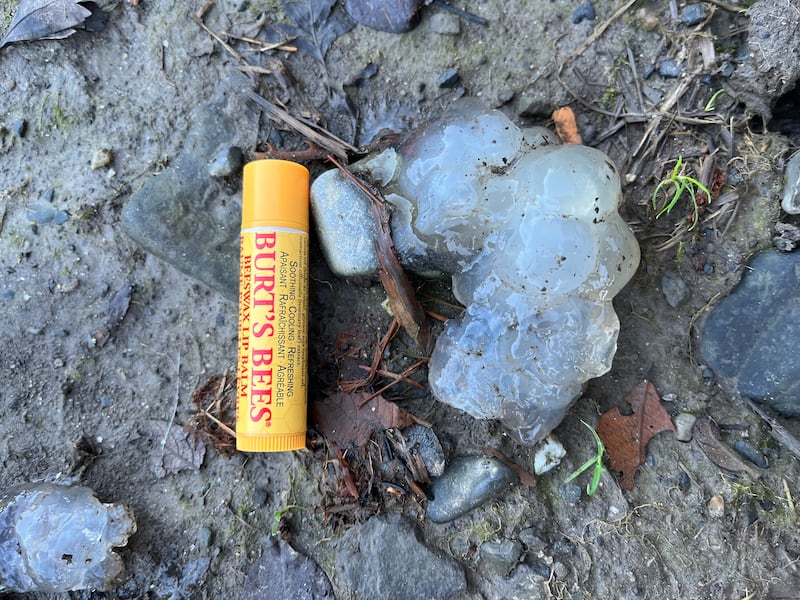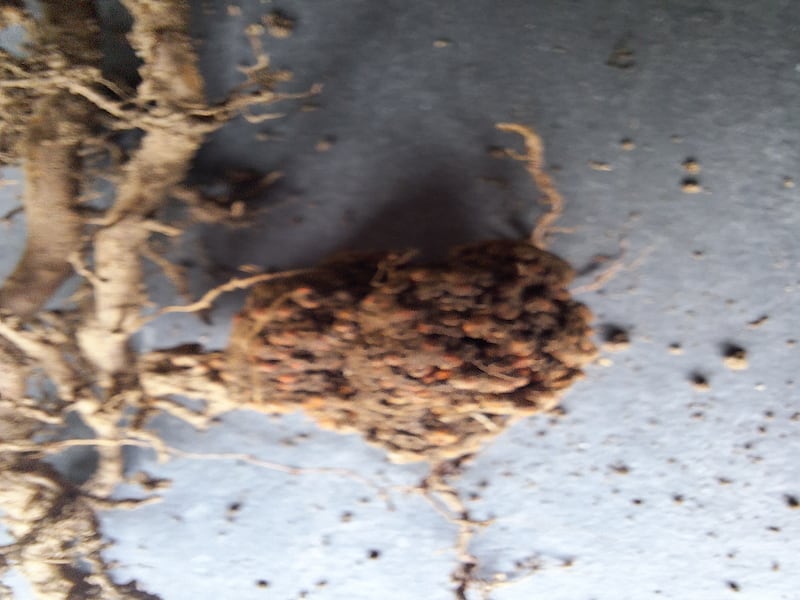Can you tell me what this is? I saw it on a tree in the Glen of the Downs. Niall Hanlon, Co Wicklow
Which is the correct word. While this looks like a fungus, it actually belongs to a different class of living things: slime moulds. These do not form penetrating strands called hyphae that absorb nutrients from the wood they penetrate, which is what fungi do. Rather, they form masses of plasmodia, that are composed of cells without cell walls, and these creep about over the surface of materials, engulfing all before them. This one is the false puffball – Reticularia lycoperdon. It will eventually turn brown, split and emit thousands of spores like puffs of smoke.

What laid this cluster of clear, jelly-like egg sacs in the middle of an expanse of gravel? Geraldine Gahan, Co Kildare
A hassled female frog, that’s what. On her way to the mating pond (females have different overwintering quarters to the males. which hibernate at the bottom of the pond) she had the misfortune to encounter a harasser – possibly a cat. Cats are notorious for “playing” with their prey, and this would have caused an involuntary release of some of her spawn. Hopefully she made her escape in the one piece.

Can you identify what this is? It is about 30cm long and my father found it on the bonnet of his car. It may be frogspawn – as there are frogs laying spawn nearby – but we have not seen frogspawn like this before. Could it have been taken from the pond and dropped by an animal or a bird? Gillian Keane, Co Cork
It looks at first glance like some sort of fish from the shape and two “eyes”, but its texture is all wrong. You were in its presence and say it is like odd-looking frogspawn and it is indeed regurgitated frog spawn, possibly eaten by a bird thinking it was food and quickly released when it copped on that it wasn’t.

I spotted this stuff on a farm lane in Celbridge, Co Kildare. Is it frogspawn? No black spots in it. There is a stream with frogs in it beside the lane. The lip balm was the only item I had on me to use for scale! My dogs, usually most omnivorous, were not at all interested in it. Doris Coyne, Dublin
To complete this master class on gloopy deposits, this is the delightfully named star snot. It was thought long ago to fall to Earth from stars during a meteor shower. It is the glands of the oviducts of frogs, left uneaten by frog predators because they taste terrible. On exposure to moisture, they swell up, burst and decompose into masses of jelly. Your dogs had more sense than to go near it.
RM Block

I was digging out brambles at the base of an alder tree and found these alder roots with odd looking nodules attached. At first I thought it was some insect home or maybe some type of fungus. What exactly are the nodules? Pauline O’Reilly, Co Galway
Root nodules on alder are formed as a result of a symbiotic infection by nitrogen-fixing bacteria belonging to the genus Frankia. This type of relationship means that both organisms benefit. The bacteria get sugars and other nutrients from the alder tissues. In return, the alder has a usable supply of the vital element nitrogen in the form of ammonia. This is because Frankia is able to convert nitrogen to ammonia directly from the air, as it contains an enzyme called nitrogenase. This allows alder to grow well in wet soil, which has very low levels of available nitrogen.
Please submit your nature query, observation, or photo with a location, via irishtimes.com/eyeonnature













